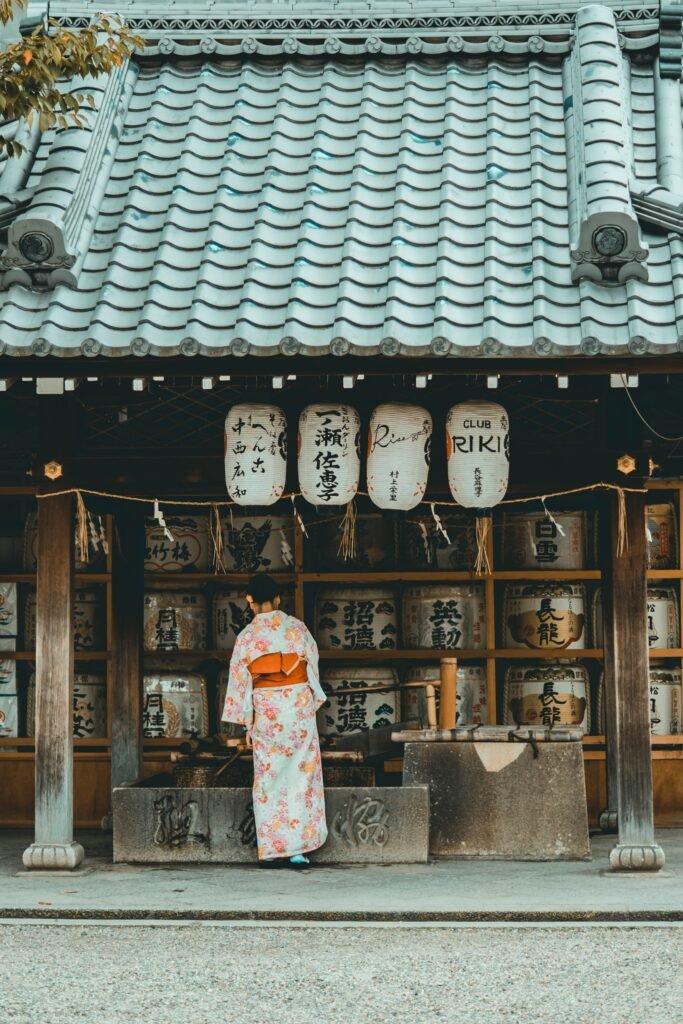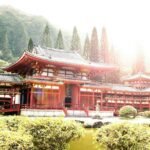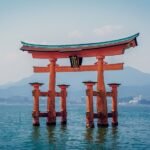In the heartland of Japan, a captivating and ancient tradition takes place each year to welcome the arrival of spring while exorcising evil spirits that linger from the past.
With vibrant costumes, colorful festivities, and an abundance of roasted soybeans hurled through the air, Setsubun is an annual celebration that goes beyond being just another cultural event.
Read on and learn more about this festival that’s deeply rooted in ancient Japanese beliefs and traditions!
Key Takeaways
- Setsubun is a Japanese festival usually held on February 3rd or 4th, just before the beginning of spring. This festival is all about getting rid of evil and welcoming good luck for the year ahead.
- Setsubun has ancient origins and is rooted in the Japanese lunar calendar. It marks the transition from winter to spring, symbolizing the renewal of nature and the driving away of evil spirits.
- People gather in temples and homes, and as they chant. They throw roasted soybeans to dispel evil spirits and bring good fortune. It is believed that by throwing and eating the same number of beans as your age, you will be protected from misfortune throughout the year.
- Setsubun is also a time to enjoy traditional Japanese food. One popular dish is “ehou-maki,” a special sushi roll that is eaten in silence while facing a specific lucky direction.
- Setsubun has evolved over time, and in modern times, it has become a family-friendly festival. Many families celebrate by visiting shrines for blessings and good fortune and participating in events and rituals held in these holy places.

What is Setsubun?
Setsubun (節分) is a traditional festival celebrated throughout Japan. It takes place on the day before the first day of spring (February 3 or 4). It is a festival held to ward off evil and welcome good fortune for the upcoming year.
It is believed that during Setsubun, the spirit world intersects with our world, allowing spirits to enter our homes. Some of these spirits are thought to bring illnesses and bad luck to the family, hence the need to purify the home before the new year begins.
To ward off these evil spirits, a ritual called Mamemaki is performed on Setsubun. This ritual dates back to the Muromachi period (1337-1573) and involves throwing beans.
Beans were believed to have sacred power and could drive away demons and evil spirits. The Japanese word for beans, “mame (豆),” sounds similar to the word for demon eyes, “mame, 魔目.” Because of this, saying “throwing the beans” sounds similar to destroying demons (mametsu, 魔滅).
Setsubun is a time for people to come together, celebrate, and ward off negativity while embracing positivity and good vibes.
Brief History of Setsubun
Setsubun is a traditional Japanese festival that has its origins in China. It was introduced to Japan during the Heian Period, which took place from 794 to 1185.
Setsubun has been celebrated in Japan since ancient times and is deeply rooted in Chinese customs and beliefs.
The word “Setsubun” itself translates to the cycle or division of the seasons, which reflects its original meaning as the day before each of the 24 solar terms known as “Nijushisekki” (二十四節季).
These solar terms were derived from the traditional Chinese lunisolar calendars and marked the changing seasons.
In the traditional Japanese calendar, each solar term spanned approximately 15 days and was determined by the position of the sun in the sky.
Therefore, Setsubun was originally a festival observed on the day preceding the beginning of each solar term. Over time, Setsubun came to be synonymous with the day before Risshun (立春 “first day of spring”), which marks the start of spring and is considered the first day of the year in the 24 solar terms.
The Japanese New Year also followed the lunar calendar until the adoption of the Gregorian calendar in 1873 during the Meiji period.
As a result, the official date of the Japanese New Year shifted from late January/mid-February of the lunar calendar to January 1st. This transition is the reason why Setsubun, a traditional Japanese festival held to celebrate the New Year, is held in February and not in January.

Mamemaki, or Bean-throwing of Roasted Soybeans
Mamemaki (豆まき), also known as the bean throwing festival, is a traditional ritual in Japan. People practice it during Setsubun to ward off evil spirits and bring good luck for the upcoming year.
People from all walks of life, including individuals, families, and even shrines and temples, participate in this action-filled event.
During mamemaki, roasted soybeans are thrown out from the front door while shouting the phrase “oni wa soto! Fuku wa uchi! (鬼は外! 福は内!)’ which means ‘Devils out! Fortune in!’.
This tradition believes that the act of throwing beans and making loud noises scares away evil spirits and invites good fortune. The roasted beans used in mamemaki symbolize the casting away of misfortune and the welcoming of prosperity.
Another interesting aspect of mamemaki is the custom of consuming the same number of beans as one’s age. It’s believed that this practice brings good health and protection.
Ehomaki or the Fortune Sushi Roll
Ehomaki (恵方巻), also known as Fortune Sushi Roll, is a special type of sushi roll that’s eaten during Setsubun. The Ehomaki roll is larger and longer than regular sushi rolls, and it’s made with seven different ingredients, symbolizing luck.
To participate in the Ehomaki tradition, you need to face a specific direction that’s believed to bring good fortune for the year.
The direction changes every year, so it’s important to check the designated direction before eating your Ehomaki. While enjoying the roll, don’t forget to make a wish for good luck and prosperity.
It is customary to eat the entire Ehomaki roll in one go without stopping or giving up. This is believed to ensure thatyou fully receive the blessings and good fortune that the roll represents. Some people even close their eyes while eating, focusing solely on their wishes and the flavors of the sushi.
Setsubun Events in Shrines and Temples

Many people visit shrines and temples during Setsubun to pray for good health, prosperity, and success in the coming year.
Special blessings or rituals are performed by priests or monks, and visitors are encouraged to make offerings and receive the blessings.
In some shrines and temples, parades featuring people dressed as demons (oni) take place.These demons are believed to be responsible for bringing bad luck and misfortune. The purpose of the parade is to drive away the demons and bring good fortune for the year ahead.
Some shrines and temples also offer fortune-telling services during Setsubun. People can have their fortunes told for the year ahead and receive advice or predictions from the fortune-teller.
The Setsubun Festival Today
Setsubun, a lively celebration deeply rooted in Japanese culture, takes place today at Buddhist temples and Shinto shrines all over Japan.
This beloved tradition attracts both locals and tourists, who gather to witness priests and celebrity guests throwing prizes like fukumame to enthusiastic crowds.
One of the most popular locations to experience Setsubun is Sensō-ji in Senso-ji Temple, the oldest Buddhist temple in Tokyo.
Here, visitors can’t only enjoy the thrilling bean-throwing event, often participated by famous celebrities, but also explore the bustling Nakamise-dori street for some shopping delights.
Sensō-ji offers the Fukuju-no-Mai dance, performed by the seven lucky gods, adding to the vibrant display of Japanese customs and traditions.
Setsubun isn’t just a celebration of the changing seasons but also a showcase of Japan’s rich cultural heritage. It provides an opportunity to immerse oneself in the festive atmosphere and witness the joyous interactions between priests, guests, and enthusiastic crowds.

Conclusion
Setsubun is a significant festival in Japan that takes place every year on February 3rd. This traditional celebration has been a part of Japanese culture for centuries and holds great importance. It marks the transition from winter to spring, symbolizing the arrival of a new season and the hope it brings.
The festival is deeply rooted in Japanese history and has been passed down through generations. It showcases the rich cultural heritage of Japan, allowing people to connect with their ancestors and appreciate their customs and beliefs.
Setsubun continues to be celebrated with great enthusiasm and reverence, serving as a reminder of the importance of traditions and the power they hold in bringing communities together. It is a time of celebration, reflection, and appreciation for the cultural heritage of Japan.
- What Is a Maiko? - July 13, 2025
- What Does Domo Arigato Mean? - July 12, 2025
- What Does Naruto Mean? - July 12, 2025









